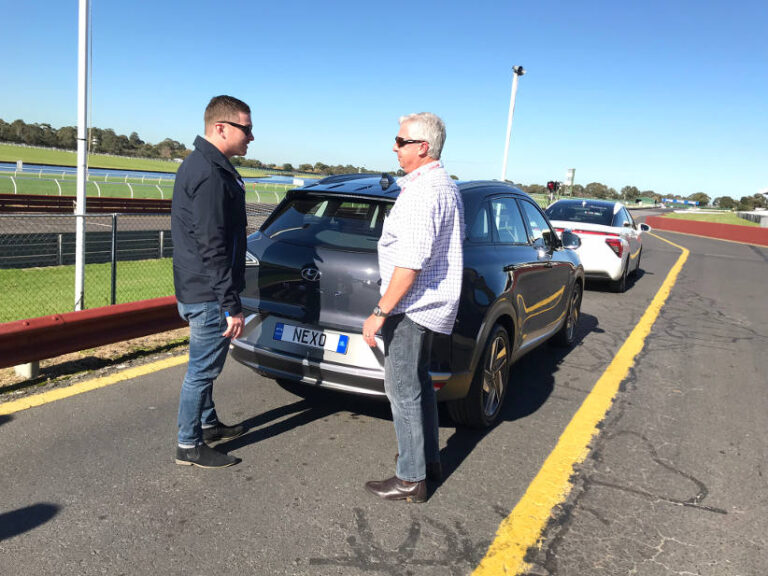You’re a fleet or business manager who sees the need to electrify your business fleet, and you’re working through steps to prepare before hitting the order button on a series of exciting new cars. Wonderful.
Before getting into how to best prepare your staff for Electric Vehicle (EV) use, let’s have a quick look at why fleet transition is so important, and such a priority in government policy, both in Australia and internationally.
Passenger vehicles account for 11% of Australia’s overall emissions, which we need to reduce by 45% by 2030 and get to net zero by 2050 in order to comply with our obligations under the Paris agreement, to minimise global temperature rises.
This means every single petrol vehicle on the roads needs to be replaced in as short a time frame as possible, which is an enormous task. Fuel Efficiency Standards from the federal government will be instrumental in ensuring only efficient (read, electric) vehicles are imported and sold in Australia in the future. But new vehicles are still out of the reach of many Australians who rely on the second hand car market. Enter vehicle fleets, with their high turnover rate, providing the best avenue to turn a stream of new vehicles into second hand vehicles.
The focus on fleet electrification provides both advantages and issues for fleet managers, as there are myriad federal and state incentives to acquiring EVs, EVs require less ongoing maintenance, and have lower fuel costs when electrical consumption is compared to petrol or diesel. However, suddenly fleet managers are saddled with the challenges of managing this momentous shift to electric driving, decisions around charging infrastructure, and the responsibility of preparing an often uneducated and at worst, sometimes hostile group of pool vehicle users. Here we hope to give some tips to assist in this education to smooth the way.
Alignment
As a fleet manager you may have received a directive to electrify, or you may be investigating this through your own initiative. As a first step, identify and align your objectives with the wider ESG or sustainability goals of the business. If there are staff or teams working towards these goals you will find people and resources to assist your transition project. Early communication of EV transition to staff will pay dividends as the project progresses.
Vehicle and Infrastructure plan
Determine the vehicles you’ll be replacing, and what you’ll be replacing them with. Work out how and where charging will take place and get these systems in place before taking delivery of vehicles.
Develop resources
Identify key users of the new EVs, and any that may have particular challenges with the vehicles, including staff with disabilities. Provide concise and friendly resources in a variety of formats to suit all users. Consider fact sheets, intranet resources, video walkarounds or in person workshops. Driving an EV is in many ways easier than an Internal Combustion Engine (ICE) vehicle, but fear of the unknown is often the biggest impediment to change. These resources should cover:
- Range, range limiters and route planning,
- Charging protocols, both public, internal and home charging (if applicable),
- Charge times, and factors affecting charge times,
- Public charging etiquette and useful apps,
- Electric driving features of a specific vehicle,
- Maintenance, technical support and emergency procedures.
You may be adopting charger management software requiring RFID authentication for charging, or other software tools for monitoring the vehicles, which will also require training.
Trial and test drive
Allow staff to test drive the vehicles and practice using charging hardware in a safe environment away from their day to day demands, to develop confidence and familiarity with the systems. Perhaps consider incentive systems for staff to choose EVs over other pool vehicles. And for staff with personal use vehicles or novated leases, stress the benefits of incentives such as Fringe Benefit Tax exemption.
Communicate
Be sure to have friendly avenues of ongoing support for drivers, and easy ways for them to report any concerns or problems with the cars or chargers, so they can be resolved quickly.
You may need to counter misconceptions or concerns people have about EVs, and be prepared to answer questions regarding safety, reliability, and the environmental impact of electric vehicles and lithium ion batteries.
In addition, it will be helpful to communicate to staff the importance of EV’s for reaching environmental targets of the organisation, and the greater decarbonisation goals of Australia and the international community.
Ask for help
Fleet transition is exciting but is a big challenge for Fleet managers. Ask your employer for more resources to best prepare for transition, coordinate with ESG, assets and HR teams within the organisation, and consider engaging specialist consultants as part of your process.
When well planned and communicated, electric driving is enjoyable, and can give a sense of contributing positively to climate action for individuals and the organisation as a whole.





